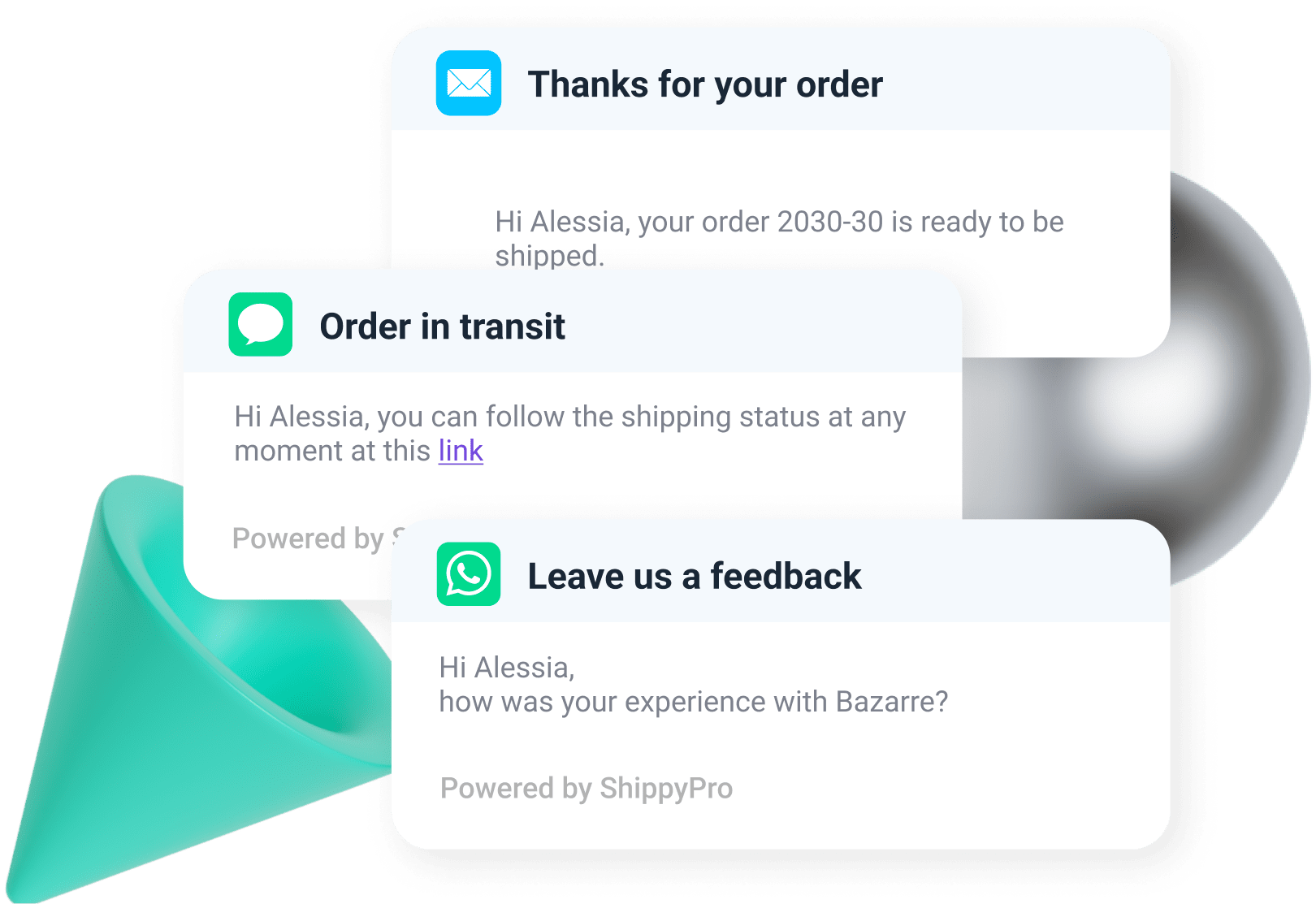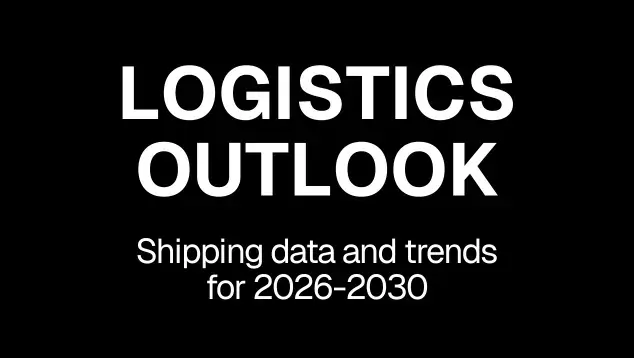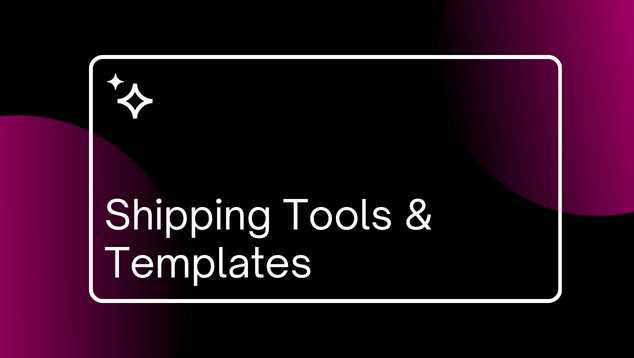Logistics and shipping automation
Explore the future of logistics and shipping automation: technologies, benefits, and real-world use cases.
Logistics automation
Explore how smart technologies optimise supply chains, cut costs, and increase visibility across global logistics networks.
Warehouse automation
Discover how robotics, smart storage, and WMS systems transform warehouses into faster, more accurate, and scalable hubs.
Fulfilment automation
See how automated rules, order routing, and real-time integrations streamline fulfilment workflows and improve delivery speed.
Resources
Blog articles and case studies for you to deep dive into shipping automation.
Automation FAQs
Got any questions left?
We've got you covered!
Statistics
Numbers, forecasts, trends... Take a look if you want to have fresh market insights logistics automation.

Logistics & shipping automation refers to the use of technology to perform manual, repetitive, and time-consuming processes across the supply chain.
It involves the integration of smart systems, robotics, AI, and cloud platforms to create seamless workflows from order management to delivery.
It includes:
- Warehouse automation
- Order fulfilment automation
- Shipping automation software
- Last-mile optimisation

From picking and packing to inventory management and goods movement, warehouse automation reduces errors, cuts costs, and speeds up fulfilment.
Technologies such as Goods-to-Person systems, AMRs, and Warehouse Management Systems (WMS) give businesses real-time visibility and greater scalability.
While initial investment can be high, ROI is compelling as throughput rises and errors decrease.

Shipping automation enables companies to automate repetitive and time-consuming tasks—like label generation, carrier selection, tracking updates, address validation, and documentation—via software integrated with ERP/WMS systems.
It minimises manual errors, accelerates dispatch times, and scales logistics operations without proportional increases in manpower. Advanced automated rules streamline decision-making (e.g. selecting carriers based on weight or destination), while smart tracking and parcel audits ensure cost control and transparency.

Ecommerce automation streamlines critical operations across channels — from order processing and inventory management to automated fulfilment workflows.
It synchronises OMS, ERP, and marketplaces, reducing overselling and manual errors. By integrating APIs, AI-driven decision rules, and multichannel logic, businesses can route orders efficiently across warehouses, balance stock levels in real time, and respond dynamically to demand.
The result: improved accuracy, faster delivery, and scalable growth without proportional increases in headcount.

AI & Logistics: trends, data, and use cases for 2026
This ebook explores real-world use cases, emerging trends, and data-driven innovations—from cost optimization and predictive analysis to smart transport. A must-read for logistics professionals aiming to drive efficiency, sustainability, and competitive advantage in 2026 and beyond.
Are you ready for a Supply Chain Automation project?
Organisational Readiness
Automation Complexity
Readiness & Complexity
Roadmap Quadrant
How ShippyPro leverages automation to streamline shipping
-
AI Insights
NewShaping shipping with zero-click automation and AI-powered insights
-
Analyze Carrier performances and choose the best option
-
Speed up fulfillment operations using custom rules
-
Connect your WMS to streamline fulfillment, enhance data accuracy, and enable intelligent automation.
-
Unify orders with the same recipient before shipping to reduce expenses & environmental footprint
-
Get complete visibility on shipping cost centres by automatically analyzing carrier invoices
Automation market insights
You can find more statistics in our Logistics report.













